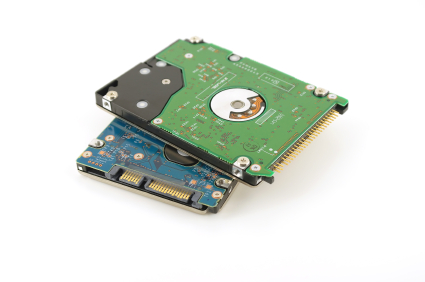IT Asset End-of-life: Granular stealth for endpoint visibility

"...ensures organisations are compliant when decommissioning laptops, before the device leaves the company’s control."
The ITAM Review seeks to analyse and evaluate ‘real world use case scenario’ products and the firms that work to bring them to market at all times.
When it comes to that most sensitive subject of governance and compliance we all want to be assured that the technology solutions we are being sold are indeed up to the job of being robust and reliant enough to manage our IT asset management requirements.
Absolute Software is making waves in this sector of the market so CEO John Livingston puts his head on the block for us.
ITAM Review: Absolute is quite specific about working in the “firmware-embedded persistent endpoint security and management” zone, as you define it – how did you define and refine your niche position?
John Livingston: In the early days of Absolute Software we identified the risk that mobility (and in those days it was just laptops) presented to organisations. Since then the challenge of managing and securing mobile devices has evolved considerably, and our technology along with it. Our patented technology is built into the BIOS of all major PC OEM manufacturers, which means IT can track, manage and secure devices regardless of locale. As a result, they can take action on devices that they deem to be at risk in order to protect both devices and the data stored on them. Since our first innovations, we have extended this technology to iOS and selected Android based tablets.
Recently Absolute Software released its Computrace 5.11 firmware-embedded persistent endpoint security and management solution. With a specific remit to try and address the governance and compliance requirements in data security management today, the new version of this product features the ability to record users’ device serial numbers for greater efficiencies while performing asset inventory administration tasks.
ITAM Review: Your company provides essential tools for governance and compliance tasks with what you describe as certificated End-of-Life Data Delete functionality. What technology pedigree and/or official credentials do you have to evidence the robustness of your Computrace 5.11 offering? i.e. where exactly do you get your expertise in compliance?
John Livingston: Our expertise has been developed over nearly 20 years of helping organisations securely manage endpoints. Compliance is becoming more challenging for organisations for two reasons: Firstly, the regulatory landscape is changing with the Information Commissioner’s Office (ICO) targeting companies of all sizes for mismanagement of data records and the European Union proposing an update to the current security directive. Secondly the rise of mobility presents challenges as more and more portable devices are accessing the network and employees travel with these devices or work from home.
ITAM Review: IT asset recycling companies work at various levels, many of them doing a fine job of decommissioning old devices quite cost effectively. Why should customers use your technology in instances when the total cost of operation is higher?
John Livingston: Our technology ensures organisations are compliant when decommissioning laptops, before the device leaves the company’s control. So often, organisations get of rid of laptops without properly wiping drives, unnecessarily putting themselves at risk of exposure. We’ve seen the consequences of mismanagement of data-delete with one of the latest ICO fines issued to the Brighton and Sussex University Hospital NHS trust. Whilst they are set to challenge the fine its clear that decommissioning can cause significant challenges.
End-of-Life Data Delete functionality is critical for any organisation to ensure compliance. Not only does it completely wipe the device, but IT also receives an auditable report stating that all data has been removed from the device.
ITAM Review: Your technology proposition includes “granular stealth” controls to manage devices remotely; do you predict greater use of these tools given the widespread enterprise adoption of tablet devices and Bring Your Own Device trends?
John Livingston: Yes, we do. Organisations are being challenged like never before. IT is ultimately accountable for the integrity of corporate data, yet often is not directly responsible for the devices that contain the data they are tasked with securing. Absolute’s solutions help organisations of all sizes bridge this “accountability divide”. As the use of mobility grows – both in terms of form factors and platforms – organisations will need to use such tools to effectively manage and secure mobile devices, thus protecting the data stored on them.
ITAM Review: What does “visibility over endpoints” really mean in day-to-day parlance for the IT manager who needs to evidence this kind of control?
John Livingston: “Visibility over endpoints” means IT having complete control over endpoints, regardless of locale. It means IT being able to take action on devices deemed to be at risk as well as the more day-to-day requirements of asset management such as monitoring for and repurposing under used devices. For IT organisations dealing with the rapid proliferation of mobility, visibility and control are essential to ensuring compliance.
ITAM Review: With regard to the kinds of tools you produce, where does automated workflow really make a difference?
John Livingston: Automated workflow reduces the burden on IT and reduces the reliance on the end user. In many cases, the end user is the weakest link in the security chain. End users rarely think about security and often view it as being IT’s problem to deal with. Equally, IT is overburdened with requests related to mobility. Automated workflow means IT doesn’t have to set up new devices accessing the network, yet can still ensure proper protocol is followed.
ITAM Review: Absolute has a long list of hardware OEM partners, how do these companies influence the future direction of your own products and services?
John Livingston: One of our strengths certainly is our OEM partnerships. We conduct regular strategy sessions with all of partners to compare roadmaps and ensure our technology remains relevant to their future development plans. An example of this is our work with Lenovo. It shared with its their plans to develop an Android-based tablet and requested that our firmware-embedded technology be a core part of their tablet offering. The Absolute R&D team worked with their counterparts at Lenovo to do just that and extend our technology from laptops to tablets. This is a great example of the importance and value of our OEM partnerships in helping to shape our roadmap and to deliver innovative solutions to the marketplace.

John Livingston, CEO, Absolute Software
ITAM Review: What special challenges do you face when trying to manage devices over different platforms in that you support PCs, Macs, Android and iOS devices?
John Livingston: Absolute supports a wide range of platforms: PC, Mac, iOS, Android, WindowsPhone, Symbian, BlackBerry, as well as Windows 8 when it launches. The challenge organisations face is really which platforms to support and how to support them. We’re working in a rapidly moving market and for Absolute the challenge is to keep current with the changes and to ensure we remain truly platform and form factor agnostic – meaning we support all devices from a single console.
ITAM Review: What will be the biggest “new” challenge facing IT asset managers in the next five years in your view?
John Livingston: Looking in the future, there will be a number of challenges facing IT asset managers. In the near term it will be about device ownership. Will IT allow employees to use whatever device they want or will IT provide a menu of approved devices for employees to select from which IT will then purchase. Both have merits and both are being implemented today.
Another challenge, which is an offshoot of BYOD, is employee privacy. What is the balance between an employee’s right to privacy versus an organisation’s need to secure data? We fully expect to see more stories about employees believing their privacy has been compromised by their IT departments.
Related articles:
- Tags: absolute software · android · asset · asset management · asset manager · embedded linux · endpoint · endpoint security · IT Asset Management · john livingston · laptop · pc oem · smartphones
